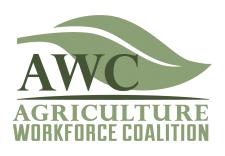NMPF and the U.S. Dairy Export Council (USDEC) welcomed the announcement last month that the U.S. and European Union (EU) will launch trade negotiations. The U.S. and EU stated that the planned Transatlantic Trade and Investment Partnership is intended to be a comprehensive agreement that addresses a broad range of bilateral trade and investment matters, including regulatory issues.
“NMPF believes that considerable potential exists for greater U.S. dairy exports to the EU, if the Transatlantic agreement effectively tackles not only market access issues but also the many nontariff barriers that have made it challenging for the United States to make more headway into the European dairy market,” said Jerry Kozak, president and CEO of NMPF.
“The U.S. dairy industry is now a major exporter globally. Despite this fact and the large size of the European dairy market, U.S. dairy exports to the EU have lagged and totaled only $88 million last year,” said Tom Suber, president of USDEC. “This is not because we can’t compete there, but because of the many tariff and regulatory hurdles facing our exporters seeking to enter the EU. The EU currently enjoys a dairy trade surplus with the United States of $1.2 billion. This is at a time when the United States is exporting $5.2 billion in dairy products around the world. We believe the Transatlantic agreement can do a lot to drive more reciprocal dairy trade between the United States and EU.”
In prior submissions to the Administration about U.S.-EU trade, NMPF and USDEC have noted that U.S. exports to the EU are hindered by significant tariffs, as well as sizable regulatory barriers such as requirements unrelated to food safety with respect to somatic cell count limits for imported dairy products, tariff-rate quota administration details, cumbersome mandates related to certificate dating, bans on the use of generic food names and other requirements. As a result, U.S. dairy sales last year to all 27 EU member states—home to over 500 million people—just barely edged out those to Singapore, a country well known for its commitment to free trade, yet home to just over 5 million people.
NMPF and USDEC also reiterated the need to ensure that any discussions on the use of common food names and geographical indications (GIs) be aimed at uprooting the rapidly expanding EU effort to erect de facto barriers to trade against U.S. products through granting GIs to many common food names.

 Dairy farmers continued in 2012 to improve their already stellar track record of keeping antibiotic residues out of the milk supply, with the most recent national survey finding that only 0.017% of all bulk milk tankers, or 1 in 6,000 loads, showed any sign of an animal antibiotic drug residue. On-farm vigilance in following drug withdrawal times has led to a steady decline in antibiotic residue, falling from an already low level of 0.061% in 2002, a decline of nearly 75% in the last decade.
Dairy farmers continued in 2012 to improve their already stellar track record of keeping antibiotic residues out of the milk supply, with the most recent national survey finding that only 0.017% of all bulk milk tankers, or 1 in 6,000 loads, showed any sign of an animal antibiotic drug residue. On-farm vigilance in following drug withdrawal times has led to a steady decline in antibiotic residue, falling from an already low level of 0.061% in 2002, a decline of nearly 75% in the last decade. NMPF continues to work with other national and state farm groups on reforms to America’s immigration policies that would allow for the future flow of workers on dairy farms and the opportunity for existing workers that may lack legal documentation to continue working on dairy farms.
NMPF continues to work with other national and state farm groups on reforms to America’s immigration policies that would allow for the future flow of workers on dairy farms and the opportunity for existing workers that may lack legal documentation to continue working on dairy farms. Congress’ failure to pass a farm bill last year is proving costly. New preliminary cost estimates from the Congressional Budget Office (CBO) have revised upward the price tag of the farm bills that moved through the House and Senate last year. The bills still show budget savings over current farm programs – saving billions of dollars over a ten-year period – but the projected savings have been reduced by new economic projections.
Congress’ failure to pass a farm bill last year is proving costly. New preliminary cost estimates from the Congressional Budget Office (CBO) have revised upward the price tag of the farm bills that moved through the House and Senate last year. The bills still show budget savings over current farm programs – saving billions of dollars over a ten-year period – but the projected savings have been reduced by new economic projections.
 The National Milk Producers Federation (NMPF) and the U.S. Dairy Export Council (USDEC) welcomed the announcement yesterday that the United States and European Union (EU) will launch trade negotiations. The United States and EU stated that the planned Transatlantic Trade and Investment Partnership is intended to be a comprehensive agreement that addresses a broad range of bilateral trade and investment matters, including regulatory issues.
The National Milk Producers Federation (NMPF) and the U.S. Dairy Export Council (USDEC) welcomed the announcement yesterday that the United States and European Union (EU) will launch trade negotiations. The United States and EU stated that the planned Transatlantic Trade and Investment Partnership is intended to be a comprehensive agreement that addresses a broad range of bilateral trade and investment matters, including regulatory issues.



